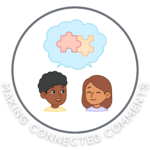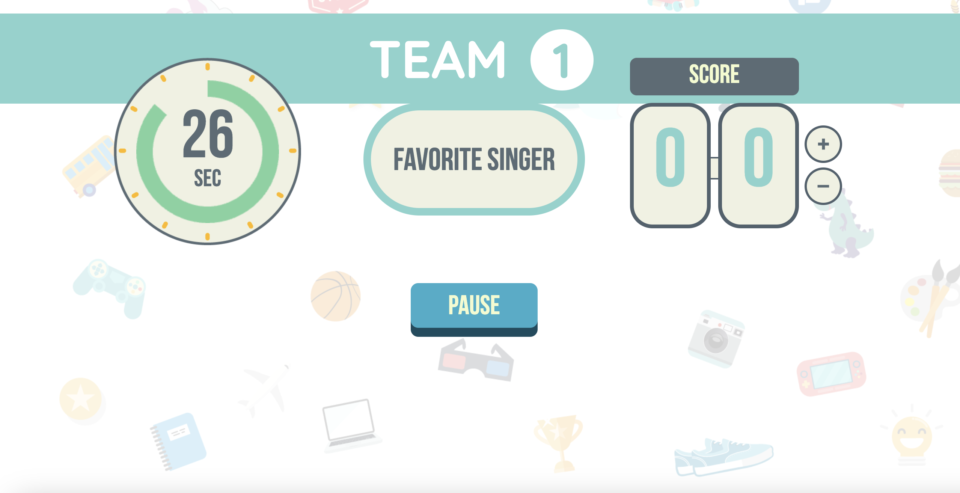
Staying on-topic during conversations is a critical skill for high school students, especially those who may struggle with social communication. As a speech language pathologist, you play a key role in helping students develop this ability. The Hot Topic game from Everyday Speech supports you in helping high schoolers stay on-topic. In this blog post, we will explore how to use this game to improve students’ conversational skills, provide a detailed lesson plan, and offer tips for success.
Why Staying On-Topic Matters
Staying on-topic is important for students because:
- It Enhances Communication Skills: Helps students participate effectively in conversations.
- It Improves Social Interactions: Encourages positive and meaningful interactions with peers.
- It Builds Confidence: Students feel more confident when they can contribute to discussion.
- It Supports Academic Success: Staying focused during classroom discussions can enhance learning and comprehension.
Introducing the Hot Topic Game
Hot Topic is an interactive game designed to help students practice staying on-topic during conversations. Each student or team is given a topic and has 30 seconds to come up with related questions or comments. The educator keeps track of points using the game’s scoreboard. After 30 seconds, the other team is given a topic and the process repeats. The team with the most points at the end wins the game.

Lesson Plan: Using Hot Topic to Improve Conversational Skills
Objective
By the end of the lesson, students will have practiced staying on-topic during conversations and generating relevant questions and comments.
Materials Needed
- Access to the Hot Topic game from Everyday Speech
- A computer or tablet
Duration
45-60 minutes
Activity Steps
1. Introduction to Staying On-Topic (5 minutes)
Begin the lesson by discussing the importance of staying on-topic during conversations. Explain how it helps in effective communication and positive social interactions. Provide examples of on-topic and off-topic comments.
2. Introducing the Hot Topic Game (5 minutes)
Introduce the Hot Topic game to the students. Explain the rules and how the game will be played. Highlight that the goal is to stay on-topic and generate as many relevant questions or comments as possible within 30 seconds.
3. Demonstration Round (5 minutes)
Conduct a demonstration round to show how the game is played. Choose a topic and model how to generate on-topic questions and comments.
4. Playing the Game (15 minutes)
Divide the students into two teams. Assign the first team a topic and give them 30 seconds to generate on-topic questions and comments. Keep track of the points using the game’s scoreboard. After 30 seconds, switch to the other team and repeat the process. Continue playing until each team has had multiple turns.
Example Topics:
- Favorite Movies
- Hobbies
- School Subjects
- Future Goals
- Sports
5. Group Discussion and Reflection (10 minutes)
After playing the game, gather the students for a group discussion. Ask questions like:
- What strategies did you use to stay on-topic?
- How did it feel to generate on-topic questions and comments?
- What challenges did you face, and how did you overcome them?
Encourage students to reflect and discuss ways to improve their conversational skills.
Unlock all of our social communication resources by signing up for your free trial today – no credit card required!
Access the full Social Communication Curriculum HERE!
Instant access to thousands of no-prep social skills activities, over 1000+ video lessons, and engaging games designed to enhance learning and development.
Conclusion
Helping high schoolers stay on-topic during conversations is a crucial part of their social and communication skills development. Using the Hot Topic game from Everyday Speech, speech language pathologists can effectively engage students in practicing these skills in a fun and interactive way. By following the lesson plan and incorporating the no-prep activity ideas, educators can create a comprehensive and supportive learning experience. For more resources and tips on supporting students’ social-emotional learning, stay tuned to our blog.
Sample Video
Try out this sample animated video lesson.
We offer our entire Social-Emotional Learning platform free for 14 days here!
Related Blog Posts:
Teaching High School Students to Make Connected Comments in Conversations
Am I Ready to Date? A Guide for High School Students and Educators
Social Communication Curriculum





